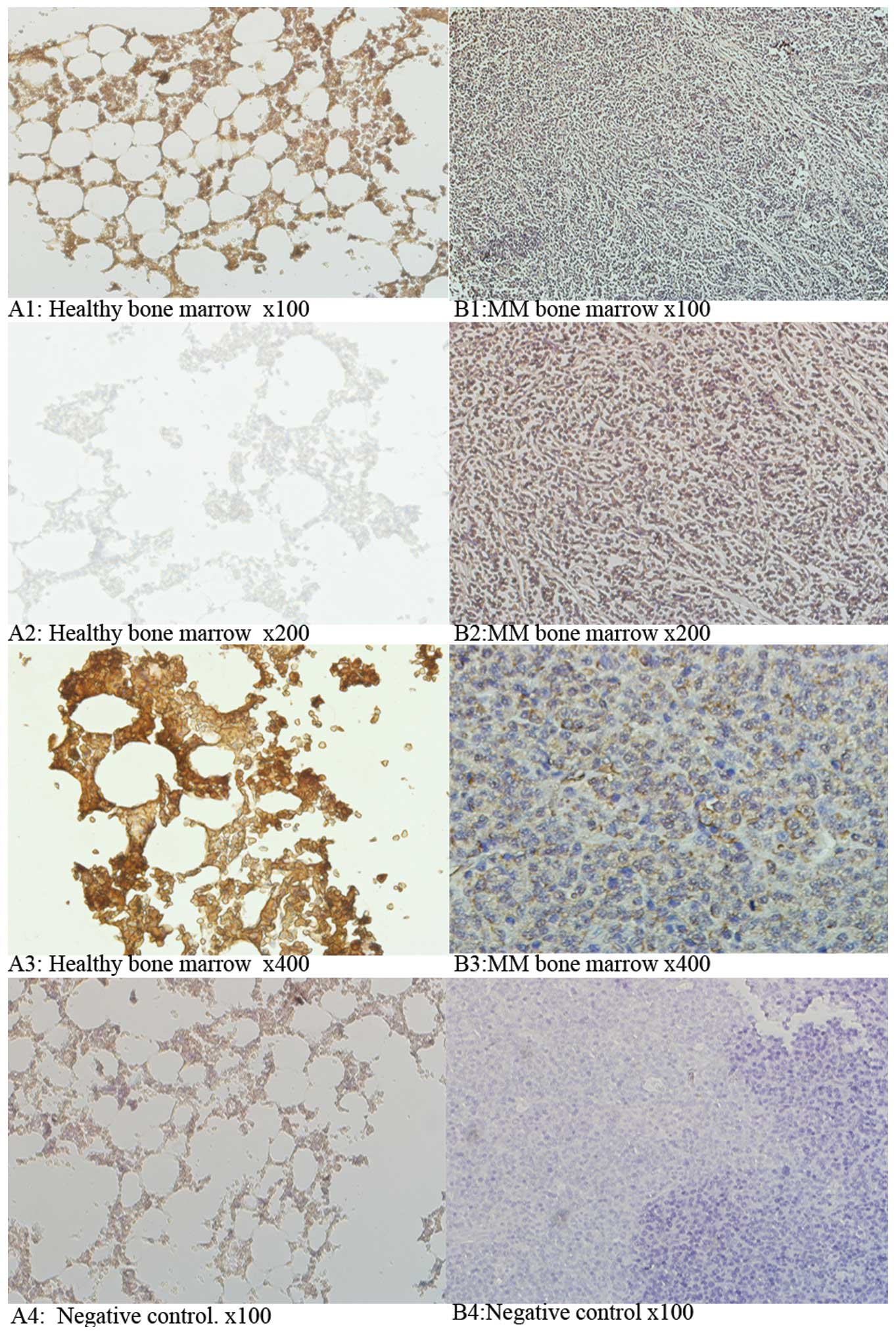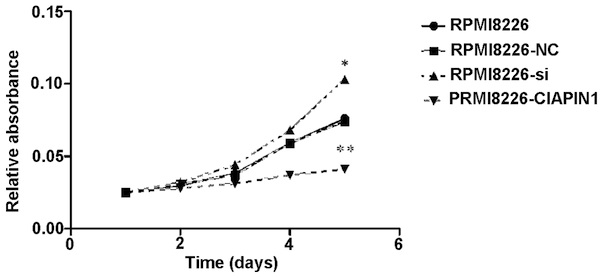Cytokine-induced apoptosis inhibitor 1 inhibits the growth and proliferation of multiple myeloma
- Authors:
- Published online on: April 22, 2015 https://doi.org/10.3892/mmr.2015.3656
- Pages: 2056-2062
Metrics: Total
Views: 0 (Spandidos Publications: | PMC Statistics: )
Total PDF Downloads: 0 (Spandidos Publications: | PMC Statistics: )
Abstract
The present study investigated the differential expression of cytokine-induced apoptosis inhibitor 1 (CIAPIN1) in human multiple myeloma (MM) bone marrow tissue and adjacent healthy bone marrow tissue. In addition, the effect of a transduced CIAPIN1 gene on the growth of the RPMI‑8226 human MM cell line was investigated. CIAPIN1 protein expression was detected in 32 samples of paraffin‑embedded MM and adjacent healthy bone marrow tissue using immunohistochemistry. The CIAPIN1 gene (Ad‑CIAPIN1, small interfering RNA) was inserted into a lentiviral vector and transfected into the RPMI‑8226 human MM cell line. The expression of target proteins CIAPIN1 and insulin‑like growth factor 1U (IGF‑1), cell cycle‑regulatory proteins and functional proteins was detected using western blotting. MTT and soft agar colony formation assays were conducted, and cellular tumorigenicity in nude mice was assessed, in order to investigate the proliferative capacity of cells in vitro and in vivo. Flow cytometry was applied in order to analyze changes in the cell cycle and cell apoptosis. CIAPIN1 expression was significantly reduced in cells from the 32 MM samples compared with those from healthy bone marrow (P<0.05). Upregulation of CIAPIN1, following transduction by lentiviral vectors, caused cells to arrest in G1/S phase of the cell cycle and significantly inhibited the growth of the RPMI‑8226 MM cell line in vitro and in vivo. CIAPIN1 was shown to inhibit cell growth. Specifically, it inhibited cyclin‑dependent kinase 2, cyclin‑dependent kinase 4 and insulin‑like growth factor‑1. Increased expression of CIAPIN1 also led to an increase in the levels of p27 and Rb, an effect that may have been achieved via regulation of cell cycle proteins and functional proteins. The results of the present study suggest that downregulation of the CIAPIN1 gene in MM cells may be associated with the development of this disease. CIAPIN1 transfection in RPMI‑8226 cells significantly inhibited the growth of tumor cells, suggesting that the CIAPIN1 gene is a potential tumor suppressor.

















